Affiliate disclosure: This post may contain affiliate links. Please see our Privacy Policy.
There’s something about making your own soap that makes you feel capable and crafty. Soap, for most people anyway, is something you see every day. It’s personal. It literally touches just about every part of your body.
With that much intimate contact, wouldn’t you like to be sure that it’s all natural with no funny stuff snuck in? The best way to be sure is to make it yourself!
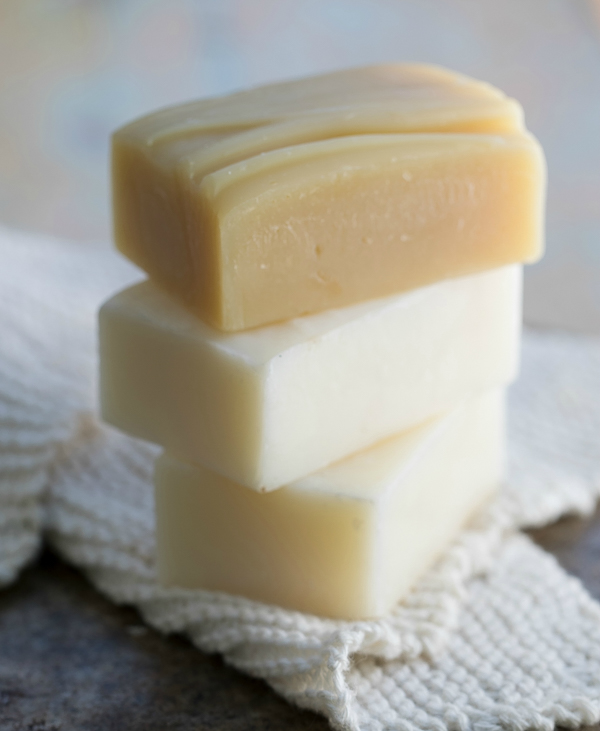
Natural Soap Making for Beginners
If you’ve never made soap before, start with a good book that will cover the basics. Just like any craft, things can get complicated quickly, and most expert soap makers don’t remember how to talk to beginners. They’ll get mired in the details while you’re still trying to understand the basic vocabulary before starting your first batch.
The Natural Soapmaking Book For Beginners is just that. A book for beginners. It explains everything you need to know to make your first batch of soap, complete with more than 50 easy-to-follow recipes for natural soap, shaving bars, shampoo bars, and laundry bars.
After you understand the basics and make your first batch, keep reading to learn how and why different oils and add-ins affect your final bar, allowing you to begin experimenting with making your own home-designed soaps.
If you’ve scanned through a soap recipe and wondered, why on earth are there 5 different types of oil in there? Will honey in the bar leave my skin sticky? What will adding oats or salt do? Kelly’s got you covered. She takes you through every ingredient so you know how each one will affect your final bar.
Natural Soapmaking Basics
Soap making is a very basic process that involves taking oils and lye through a chemical reaction that “saponifies” the oils and makes them attract other particles so that they can clean effectively.
You begin by mixing the oils and bringing them to temperature (110 degrees F), and slowly add a water and lye mixture (be sure to see Kelly’s discussion on soap safety for safe lye practices!). Add in any natural colors, fragrances and then blend to trace. That means mix the soap, usually with a hand-held stick blender, until it thickens enough that you begin to trace lines that into the soap that stay for a few seconds. Pour into a mold and wait for it to cure. That’s it. All natural homemade soap.
Essential Equipment
Before it’s cured, soap reacts with aluminum and iron, so everything you use needs to be stainless steel or plastic. You’ll need a large stainless steel pot, stick blender, stainless steel spoon, glass or plastic bowls, kitchen scale, rubber spatulas and a thermometer. You’ll also need a soap mold to use to set your soap in your desired shape. There are a lot of creative soap mold shapes available on amazon. With a goats milk and honey soap, try a honey bee soap mold or a goat-themed soap mold.
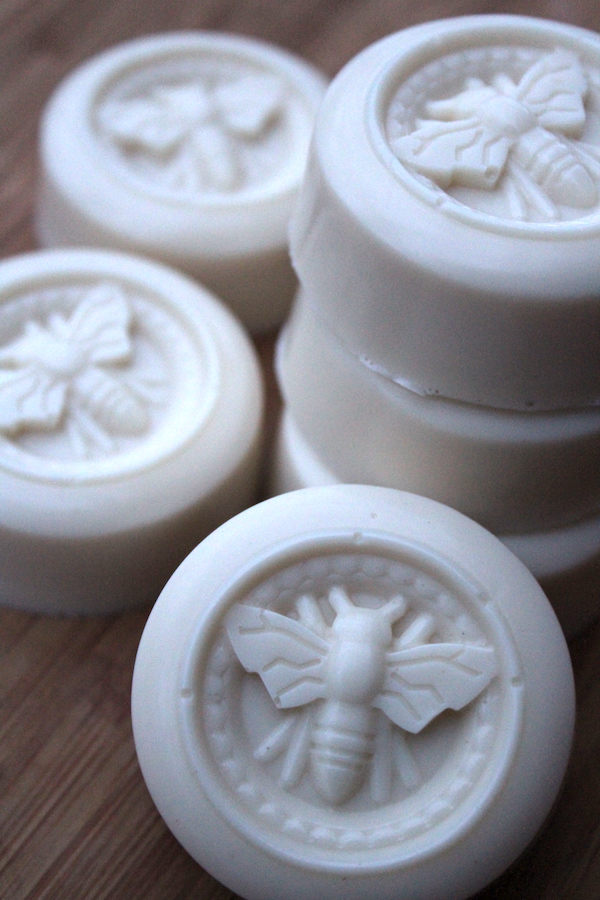
Goats Milk and Honey Soap Recipe
This recipe is for a naturally moisturizing goats milk and honey soap from page 90 of The Natural Soapmaking Book for Beginners. Goats milk contains natural vitamins that help to nourish skin and honey is a natural antimicrobial that helps to make a creamy, bubbly soap.
It should take you about 2 hours to prepare, followed by 24 hours of curing in the mold and then 4 to 6 weeks of curing time before use.
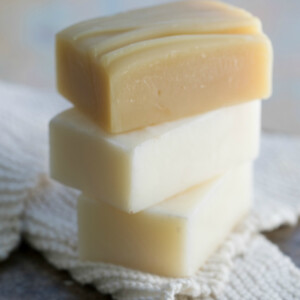
Goat Milk and Honey Soap
Equipment
- Large stainless steel pot
- Large spoon
- Large Bowls
- small zip top bag
- Parchment Paper
- Rubber Spatula
- Measuring Spoons
Ingredients
- 10 ounces olive oil
- 8 ounces lard
- 8 ounces coconut oil
- 4 ounces sweet almond oil
- 2 ounces beeswax
- 4 ounces lye
- 8 ounces filtered water
- 4 ounces goat milk
- 1 ounce orange essential oil
- 1 Tablespoon raw honey
Instructions
Safety First!
- Remember to wear your safety equipment and mix the lye water outside. Tell everyone you live with that where you’re working is off limits. Give yourself enough time to complete the recipe.
Prep Ahead
- Combine the water and milk in a large glass, plastic, or stainless steel container. Place milk-water into the freezer for 1 to 2 hours. It is okay if a slush forms, as long as it doesn’t freeze. The colder your milk-water, the lighter your soap will be after adding the lye.
Make Soap
- Heat the Fats/Oils: In a large pot over medium-low heat, combine olive oil, lard, coconut oil, sweet almond oil, and beeswax. Heat until they are melted and incorporated. Remove from heat and allow to cool to 90-100°F.
- Mix the Lye-Water: Put on protective gear including a mask, gloves, and long sleeves. Outside, very slowly pour only ¼ of the lye into the milk-water and stir until dissolved. Let cool for 20 minutes. Repeat until all lye is dissolved into the milk-water. If milk still browns, don’t worry. Your soap will just be darker. Allow to cool to 90-100°F. If oil or lye water cool at different rates, you can use a cold or hot water bath in the sink.
- Prepare the Mold: While the oils and lye water cool, line the mold with parchment paper.
- Combine and Bring to Trace: When both oils and lye water are around 90-100°F, pour the lye water into the pot of oils. Use a stick blender or hand mixer to mix for 1 to 2minutes and then let the mixture rest for 4 to 5 minutes. Repeat mixing and resting until light trace.
- Mix in Natural Additives: When soap reaches light trace, add essential oils and honey and blend for 30 seconds.
- Mold the Soap: Pour the soap mixture into the mold, cover with a lid or parchment paper for 24 hours. Do not insulate unless your house is below 75°F, then insulate by placing a towel around the outside edges to avoid a partial gel.
- Cut and Cure: Remove soap from the mold. If it seems too soft to remove, wait another 12 to 24 hours before removing. Cut the soap into twelve 4-ounce bars. Allow the bars to cure for 4 to 6 weeks.
Notes
Lye Discount: 15%
Label: Moisturizing
Start to Finish Time: 2 hours, 24 hours in mold, 4 to 6 weeks to cure
Scent: Orange Tips: Milk can scald when lye is added. Placing the milk-water in the freezer until it’s very cold helps prevent this. Be sure to add lye slowly. It is okay to really take your time, coming back every 20 minutes to add a little more. Adding milk can also make your batch get hotter than usual, so just insulate a milk recipe lightly with a towel if you’re concerned about getting a good gel for color. Honey can also make soap come to trace faster, so add it and blend really well right before pouring soap into the mold.
If you’re particularly excited about the idea of goats milk and honey soap, also included in the book are recipes for a creamy goats milk and honey shaving bar, goats milk and honey shampoo bar and a goats milk and honey confetti soap bar to add a little visual excitement. If you want to try another recipe from Kelly’s book, check out this festive holiday candy cane soap recipe.
Still a bit intimidated by soapmaking? Try making this lye-free goats milk and honey melt and pour soap to get you started, or read up on common soapmaking mistakes so you can avoid common pitfalls.
Disclosure: Kelly Cable at Simple Life Mom provided me with a free copy of The Natural Soapmaking Book for Beginners for this review, however, my opinions are my own. It’s a beautiful book and well written, and I’m thrilled that I got to read it before it hit the press. I wholeheartedly recommend it.
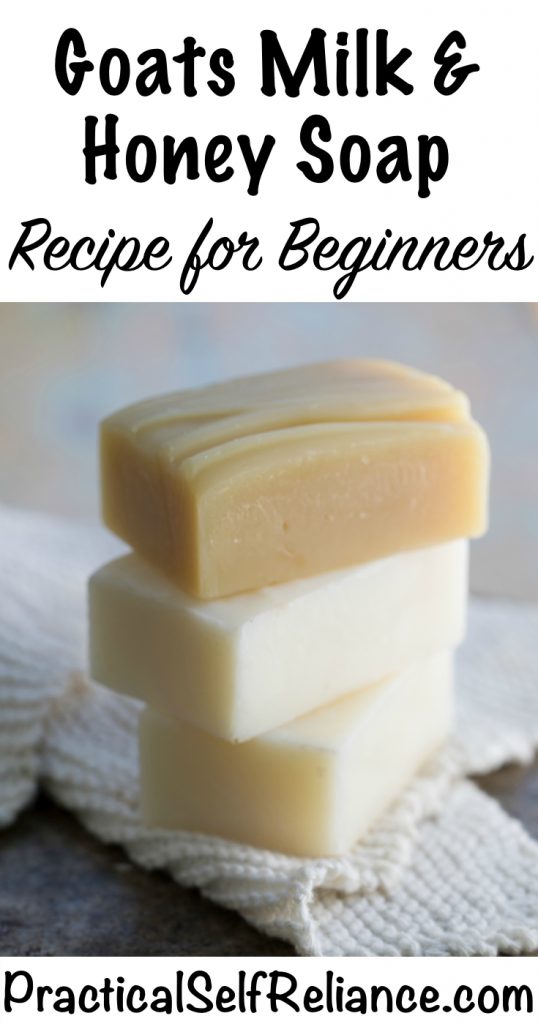
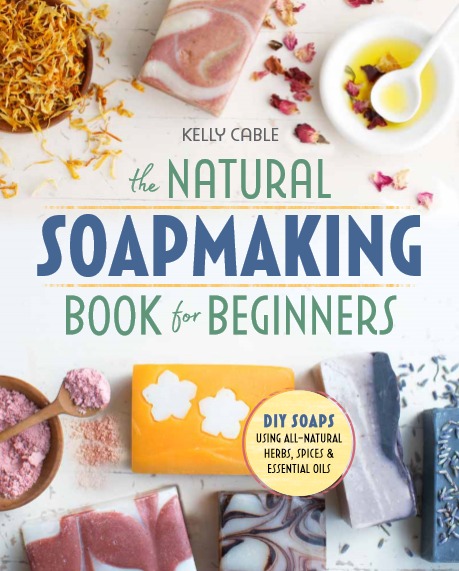

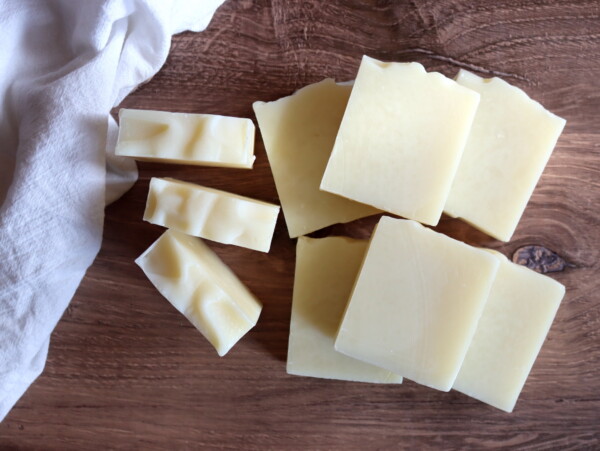
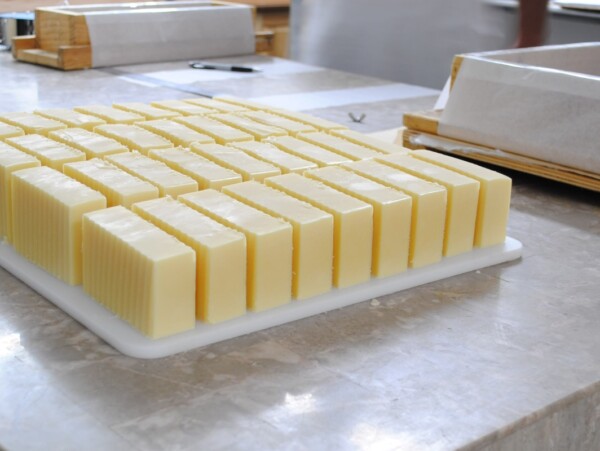
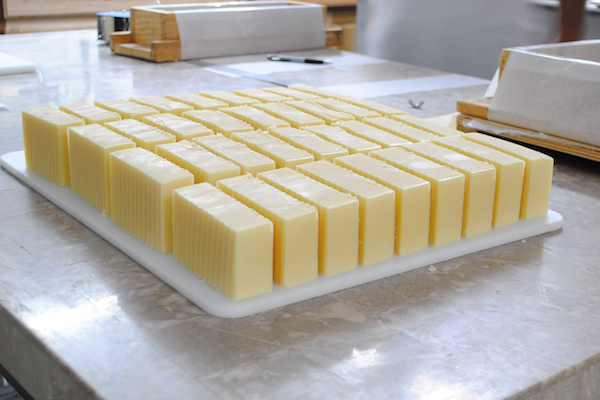
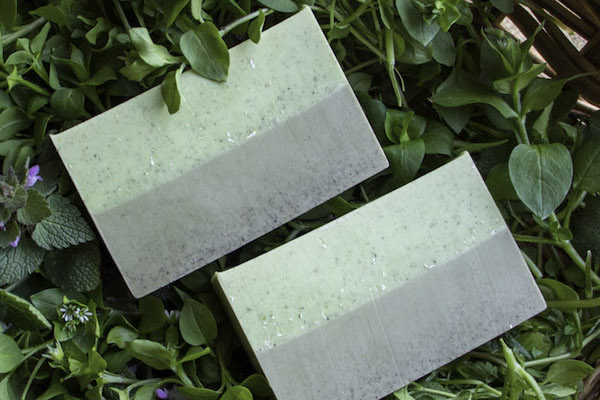










Such a great beginner friendly recipe!
Can you leave out the lard and the beeswax to make liquid soap?
Liquid soap is made with a different kind of lye and a different process. Don’t change the amount of fat in the recipe, as that’ll leave you with extra un-reacted lye in the end and the soap won’t be safe to use.
Thanks so much for giving everyone remarkably special possiblity to read from this site. It’s always very pleasurable and full of fun for me personally and my office friends to visit the blog at the least 3 times a week to find out the new guides you have got. And lastly, I am always impressed with your powerful tips you serve. Certain 4 areas in this posting are particularly the simplest we’ve had.
Thanks Harlan, so glad you’re enjoying the site!
Ashley – Wish I had started out living like you do at your age! Sadly, it’s far too late for me. But I do make my own soap and have for years, and I make enough for the kids and their family. Also – body lotion, face cream.
You are a precious gift to everyone whose path you cross! Seriously. I so enjoy your posts.
Thank you so much Jobie!
Howdy,
Thank you for these articles. They are appreciated. Can tallow be substituted for lard?
Lard and Tallow have very similar saponification values, and in this particular recipe, yes, you can substitute tallow in place of lard. In general, if you want to make substitutions in soapmaking recipes, it’s best to run them through a soap calculator like this one to check if the lye is still the right amount: http://www.soapcalc.net/calc/SoapCalcWP.asp
I just ran this recipe, and it works just fine. But you can use it to check if you need to make other substitutions in the future.
It’s not easy finding soaps that are soy and coconut free, so when I do they are pricey! My favorite so far has been a goat milk and honey olive oil soap bar. I would love to try this soap with babassu in place of the coconut oil. I saw on another site that it is a good replacement and lathers just like coconut. I’m not sure I’m using calculators correctly. In this recipe, would you replace the coconut with the same amount of babassu, and follow everything else as it is listed, or would other ingredients also need to change amounts?
You would use the same amount of babassu as coconut oil but then you always want to run it through a lye calculator anytime you change an oil to make sure that the lye amount is the same. You usually want around a 5% superfat for your lye amount.
Thanks. I think what confused me is the top of the recipe said 15% superfat and I couldn’t find a calculator that went over 10%.
Does the lye make the milk water hot? I’m sorry I don’t know if I’m just reading over it but it says to let the milk water and lye cool to 90 to 100°, however when it is in the recipe it says to mix it outside and I don’t understand when we heat it? Obviously very much a beginner here.
The lye causes a chemical reaction when it is mixed with the liquid which causes it to heat up very rapidly.
I am a beginner to produce bar soap at home. So I have got smart information, thanks for all.
You’re very welcome.
Could I hot process this soap instead of letting it cure for several weeks?
Yes, you can hot process it instead. I’ve found that the quality of hot processed soap is not quite the same as cold processed soap, but plenty of people absolutely love hot processed soap so it’s a matter of personal preference.
Can I use the same recipe but substitute the milk for just water? I can’t wait to start making soap with my locally sourced honey!
Yes, you can use all water if you wish. If using water, there is no need to place the water into the freezer before adding the lye.